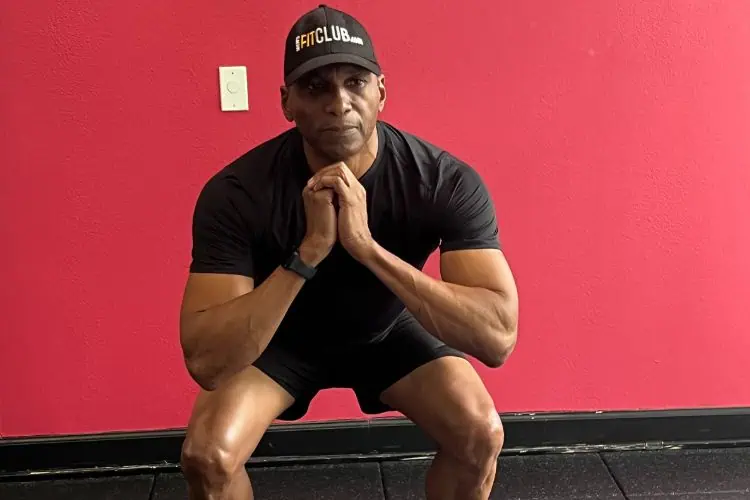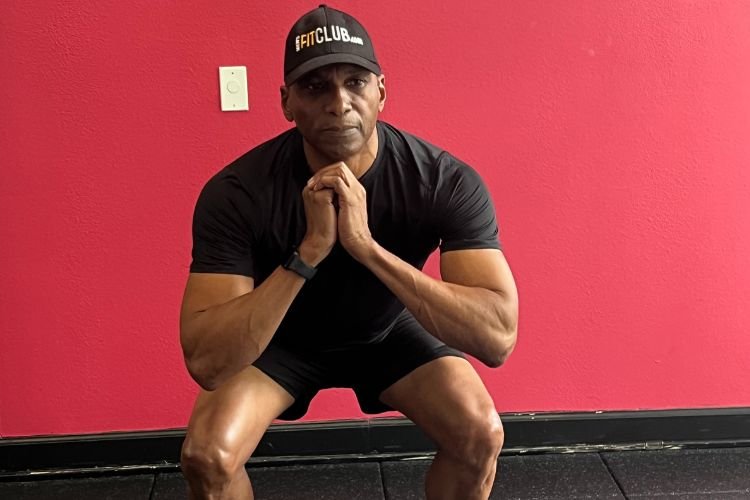
Working out without equipment is a highly effective and accessible way to build strength, burn fat, and improve overall fitness. For men who may not have access to a gym or prefer exercising at home, full-body workouts that require no weights can be just as efficient as gym-based routines. These bodyweight exercises target all the major muscle groups while improving cardiovascular fitness, flexibility, and endurance. In this blog, we’ll break down a no-equipment, full-body workout routine, explain its benefits, and provide tips for progression.
The Benefits of a Full Body Workout Without Weights
Before we dive into the exercises, let’s first highlight why bodyweight training is beneficial for men of all fitness levels.
1. Convenience and Accessibility
One of the greatest advantages of a bodyweight workout is that it can be done anywhere—whether you’re at home, in a park, or even traveling. Since no equipment is required, you don’t have to worry about gym memberships or purchasing weights. This flexibility allows you to stay consistent with your fitness routine, regardless of your location.
2. Improved Functional Strength
Bodyweight exercises mimic natural movement patterns, which are crucial for functional fitness. Movements like squats, push-ups, and lunges engage multiple muscle groups, making them excellent for improving overall strength that translates into daily life. For instance, performing squats helps with mobility, while push-ups build upper body strength.
3. Increased Flexibility and Mobility
Most bodyweight exercises work on your flexibility and mobility, essential components of fitness. Movements like lunges and hip thrusts not only strengthen muscles but also improve your range of motion and joint flexibility. This is particularly important for men as they age, as maintaining mobility helps prevent injury and supports long-term health.
4. Weight Loss and Cardiovascular Health
Full-body workouts with no weights can elevate your heart rate and burn calories effectively. By combining strength-building exercises with high-intensity movements like burpees or mountain climbers, you get a cardiovascular boost. This increases fat-burning potential while building lean muscle.
5. Adaptable for All Fitness Levels
Bodyweight exercises are highly adaptable. Whether you’re a beginner or more advanced, you can modify exercises to match your current fitness level. This makes bodyweight training suitable for men of all ages and abilities, allowing for progression as you get stronger.
Full Body Workout Routine Without Weights
Now that we’ve covered the benefits, let’s move on to the full-body workout. The following exercises target all major muscle groups and provide a balanced approach to fitness. Complete the workout as a circuit, performing each exercise for 45 seconds, followed by 15 seconds of rest. Rest for one minute after completing all exercises, then repeat the circuit 3-4 times for a full workout session.
1. Push-Ups Full Body Workout No Weights
Push-ups are one of the most effective upper body exercises, targeting the chest, shoulders, triceps, and core.
How to perform:
- Start in a high plank position with your hands shoulder-width apart and your body in a straight line from head to heels.
- Lower your chest towards the floor while keeping your elbows close to your sides.
- Push back up to the starting position.
Modifications:
- Easier: Drop your knees to the floor to reduce resistance.
- Harder: Try clap push-ups or decline push-ups by placing your feet on a raised surface.
2. Squats Full Body Workout No Weights
Squats are the ultimate lower body exercise, working the quads, hamstrings, glutes, and core.
How to perform:
- Stand with your feet shoulder-width apart and your toes slightly turned out.
- Lower your hips as if sitting back into a chair, keeping your chest upright and your knees tracking over your toes.
- Press through your heels to return to the starting position.
Modifications:
- Easier: Perform half squats, going halfway down.
- Harder: Try jump squats to add an explosive element.
3. Plank
The plank is an excellent core exercise that works the abs, lower back, and stabilizing muscles.
How to perform:
- Start in a forearm plank position with your body in a straight line from head to heels.
- Keep your core engaged and your hips in line with your shoulders, avoiding sagging or raising your hips too high.
- Hold the position for the allotted time.
Modifications:
- Easier: Drop your knees to the floor while maintaining a straight line from your head to your knees.
- Harder: Try side planks or alternate raising one leg or arm.
4. Lunges Full Body Workout No Weights
Lunges work the quads, hamstrings, glutes, and calves while also improving balance and stability.
How to perform:
- Stand tall with your feet together.
- Step forward with one leg and lower your hips until both knees are bent at 90-degree angles.
- Push through the front heel to return to the starting position and switch legs.
Modifications:
- Easier: Reduce the depth of the lunge.
- Harder: Try jumping lunges or walking lunges.
5. Burpees
Burpees are a full-body, high-intensity exercise that boosts cardiovascular fitness and burns fat.
How to perform:
- Start standing, then drop into a squat position with your hands on the floor.
- Jump your feet back into a plank position, then immediately jump them back in and explode up into a jump.
- Land softly and repeat.
Modifications:
- Easier: Step back instead of jumping into the plank position.
- Harder: Add a push-up when you are in the plank position.
6. Mountain Climbers Full Body Workout No Weights
Mountain climbers are a core-strengthening and cardio exercise that targets the abs, shoulders, and legs.
How to perform:
- Start in a high plank position with your hands under your shoulders.
- Drive one knee towards your chest, then quickly switch legs, mimicking a running motion.
- Keep your core engaged and your back straight.
Modifications:
- Easier: Slow down the pace.
- Harder: Speed up the movement or add a twist by bringing the knee to the opposite elbow.
7. Glute Bridges
Glute bridges work the glutes, hamstrings, and lower back, and are great for building posterior strength.
How to perform:
- Lie on your back with your knees bent and feet flat on the floor.
- Press through your heels to lift your hips towards the ceiling, squeezing your glutes at the top.
- Lower back down and repeat.
Modifications:
- Easier: Reduce the range of motion.
- Harder: Try single-leg glute bridges or hold the top position for a longer time.
8. Superman Hold
The superman hold targets the lower back, glutes, and shoulders, helping to improve posture and strengthen the posterior chain.
How to perform:
- Lie face down with your arms extended in front of you.
- Simultaneously lift your arms, chest, and legs off the floor, squeezing your glutes and lower back muscles.
- Hold for a few seconds before lowering back down.
Modifications:
- Easier: Lift only your legs or arms.
- Harder: Increase the hold time or add small pulses at the top.
9. Pike Push-Ups Full Body Workout No Weights
Pike push-ups focus on the shoulders and upper chest, providing an excellent upper body workout.
How to perform:
- Start in a downward dog position with your hips raised and your head between your arms.
- Lower your head towards the ground, bending at the elbows.
- Push back up to the starting position.
Modifications:
- Easier: Reduce the range of motion.
- Harder: Perform handstand push-ups or increase the range of motion.
10. Leg Raises
Leg raises are effective for targeting the lower abs and strengthening the core.
How to perform:
- Lie on your back with your legs extended and your hands by your sides or under your hips for support.
- Lift your legs towards the ceiling while keeping them straight, then slowly lower them back down without letting them touch the floor.
- Repeat the movement for the allotted time.
Modifications:
- Easier: Bend your knees slightly as you raise your legs.
- Harder: Add a reverse crunch at the top of the movement.
How to Progress Without Weights For A Full Body Workout
To continue making progress without weights, it’s essential to implement certain training principles and strategies.
1. Increase Repetitions or Time
One way to challenge yourself is by increasing the number of repetitions or the time you spend on each exercise. If you start with 30-second intervals, aim to work your way up to 45 seconds or a full minute per exercise. This will help increase your endurance and muscle stamina.
2. Add Intensity
Adding intensity through explosive movements, like plyometric push-ups or jump squats, is another way to make bodyweight exercises more challenging. These movements recruit fast-twitch muscle fibers and improve your power output.
3. Incorporate Progressive Overload
Just like with weight training, you need to progressively overload your muscles to see improvements. This can be done by increasing the difficulty of the exercises (for example, switching from regular push-ups to one-arm push-ups), increasing volume (more sets or reps), or reducing rest time between exercises.
4. Focus on Form
Maintaining proper form is key to avoiding injury and maximizing results. Always ensure that your body alignment is correct, and engage your core to support your movements. If you’re unsure of your form, consider using a mirror or filming yourself during the workout.
5. Add Variations
Adding variations of each exercise keeps your muscles guessing and helps prevent plateaus. For example, you can alternate between wide-grip and narrow-grip push-ups, or between regular squats and Bulgarian split squats.
Sample Weekly Routine Full Body Workout No Weights
Here’s a sample weekly workout routine that incorporates the full-body workout without weights:
Day 1: Full-Body Circuit (Repeat 4 times)
- Push-Ups
- Squats
- Plank
- Lunges
- Burpees
2: Rest or Active Recovery (Light Yoga, Stretching)
3: Full-Body Circuit (Repeat 4 times)
- Mountain Climbers
- Glute Bridges
- Superman Hold
- Pike Push-Ups
- Leg Raises
4: Rest or Light Cardio (Brisk Walk, Swimming)
5: Full-Body Circuit (Repeat 4 times)
- Push-Ups
- Squats
- Plank
- Lunges
- Burpees
6: Rest or Active Recovery
7: Light Cardio or Mobility Work
Full-body workouts with no weights are a fantastic way for men to build strength, improve cardiovascular fitness, and boost overall health. These exercises target all major muscle groups, are accessible to all fitness levels, and can be modified to suit individual needs. Whether you’re looking to lose weight, gain muscle, or simply stay fit, this bodyweight workout routine can be your go-to option for achieving your fitness goals. So, start incorporating these exercises into your weekly schedule and experience the benefits of full-body training without the need for equipment.
